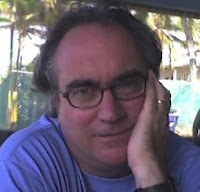Spinoza developed what is known as a "double aspect" theory of mind (remember that a "theory of mind" is a theory meant to explain the metaphysics of the mind/body relation). On Spinoza's view, everything comes under two descriptions, a physical description and a mental description. Behind this theory is a metaphysics that there is only one substance ("God," or "Nature"). There may be infinitely many descriptions ("modes") of things, but in our finitude we grasp only the physical and the mental. It is not clear to me whether this means that everything (the Parmenidean One) comes under the two descriptions or that every thing (you, me, the chairs we're sitting in) does. In the latter case there is a puzzle about the mental descriptions of the chairs; this is the "pantheist" interpretation of Spinoza.
One of the many promising lines of thought that are suggested by Spinoza's work is about the problem of mental causation: how could nonphysical things or properties interact causally with the physical world? On a double aspect view the strategy is to show that the mental and the physical are not in fact metaphysically distinct, and thus that there is no particular problem about causation (just, perhaps, the usual metaphysical problems with causation in general). A version of this is developed by Donald Davidson in his paper Anomolous Monism, where the physical token of the mental state plays the causal (physical) role, while the semantic content of the mental is not in a nomological (law-like) relation with the physical state.
John Heil (with profusely acknowledged debt to C.B. Martin) develops another Spinozistic line with a double aspect theory of properties. On Heil's view all properties are both dispositional (with "powers" to enter into causal relations) and qualitative (the "way things are"). Strictly speaking, Heil wants to replace the model of chains of cause-and-effect relations with a model of a "power web," where dispositions are seen as relational properties between dispositional partners. This has various advantages for metaphysics in general, such as providing for polyadic causal relations to replace the awkward discussion of "background conditions" etc., and resolving the temporal dilemmas arising from our intuitions about antecedent causes and subsequent effects. The payoff for philosophy of mind, I think (I need to ask Prof. Heil about this), is that the intentional and the phenomenal mental properties can then be seen to be one and the same properties, under different aspects. This is an exciting bit of work and I for one am going to spend more time with Prof. Heil's writings and bibliographies. However, I think that I have a view that is in some sense the opposite of Heil's. Is my view also a "double aspect" view?
On my view (if I had to acknowledge just one source, I guess I'd say Gilbert Ryle's The Concept of Mind), the story is: reductive materialism was the intuitive favorite theory of mind after the failure of behaviorism to account for phenomenal properties (and the early materialist articles by Smart and Place et al are largely concerned with afterimages and red sploches and so forth), but reductive materialism was taken to be definitively defeated by the problem of multiple realizability, and by 1975 Putnam and others were developing functionalism, which continued to have chronic problems with phenomenal properties. All "operational" theories fail to account for the "what it's like" of phenomenal experience. (This is Heil's starting point, I think, and the target of his Spinozistic strategy. The operational/intentional/dispositional aspect is one mode and the experiential/phenomenal/qualitative aspect is another mode of the same thing, that is, the same property). I say, taking the opposite path from the monists, that "mind" is a complex concept - a polite way of saying that there isn't really anything that corresponds to the traditional concept of "mind" - and that we need not one but two theories of mind. We need a story about the metaphysics of intentionality and we need a story about the metaphysics of phenomenology. I have been developing these ideas in this blog and won't add a long passage here this morning, but here's a taste: intentional properties are relational properties of persons, and phenomenal "properties" (not really properties at all) can't actually be described but can be, metaphysically speaking, explained with reductive materialism. Qualitative experience is a "property," that is, of bodies. The mistake, that became vicious during the transition from reductive materialism to functionalism, is to suppose that there is some one thing the "mind" and that therefore a theory of mind must account for the metaphysics of both intentionality and phenomenology. My working title has been A New "Double Aspect" Theory of Mind but this week I'm not sure whether that's a good title; my view is not a double aspect view in the sense that Spinoza, Davidson, and Heil develop.
Tuesday, May 1, 2007
Subscribe to:
Post Comments (Atom)



No comments:
Post a Comment